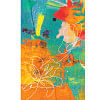WB Yeats’s ‘Easter, 1916’ and Bangladesh’s July 1-36, 2024

The 1923 Nobel laureate in literature, William Butler Yeats (1865-1939), is admired as arguably the greatest English-language poet of the 20th century. His country Ireland was the longest standing colony in Europe. It came under Anglo-Norman rule in 1169 and suffered colonial oppression for nearly 800 years.
One of the major Irish uprisings against British colonialism happened in 1798. Commonly known as the Irish Rebellion of 1798, it was inspired by the American War of Independence (1775-83) and the French Revolution (1789-99). The British crushed the rebellion and instituted "the most savage repression … to wipe out further resistance."
The next major Irish revolt to gain independence was the Easter Rising. It began on Easter Monday, on April 24, 1916, and is regarded as the "harvest of seeds sown in 1798." Yeats's poem "Easter, 1916" makes it easy to remember the date. Its four stanzas imply the fourth month (April), the first and third stanzas have 16 lines each and point to the year 1916, and the second and fourth stanzas each have 24 lines to indicate April 24.
The British quelled the Easter Rising in six days and executed 15 of its top leaders through firing squads within weeks. The heavy-handed response sparked a huge outburst of anger among the Irish, many of whom—including Yeats—did not support the rebellion at the beginning.
Although suppressed and ostensibly a failure, the anticolonial struggle continued and spread from Dublin to other parts of Ireland, culminating in the Irish War of Independence (1919-21). The Anglo-Irish Treaty was signed in December 1921 and the Irish Free State (Agreement) Act was passed in the British Parliament on March 31, 1922. Thus, 26 of Ireland's 32 counties achieved independence; the remaining six counties were and continue to be under British rule. They form what is now Northern Ireland, which is part of the UK, though not as a colony in the conventional sense of the term.
Yeats was mainly an intellectual and literary prodigy who was opposed to armed insurrection and bloodshed. To him, anti-imperialism was an intellectual act and cultural rejuvenation free from violence. He shared a general distrust in Irish revolutionaries and discredited their rhetoric, as his poem "September 1913" illustrates his disenchantment with post-John O'Leary Irish nationalist leaders.
Initially, Yeats considered the bloodshed and loss of lives during Easter Rising futile and wasteful. But the unwavering dedication of the rebels changed his mind and earned his sympathy. To elegise and eulogise them, he wrote "Easter, 1916," a palinode where he retracts what he said earlier in "September 1913."
In "Easter, 1916," Yeats uses the oxymoronic refrain "a terrible beauty is born" to glorify the heroism of the Easter rebels. To describe their devotion and tenacious commitment to freedom, he says:
Hearts with one purpose alone
Through summer and winter seem
Enchanted to a stone.
…
Too long a sacrifice
Can make a stone of the heart.
I don't think the imagery of "stone" here signifies "extreme idealism," "the frozen heart" or "the rigidity and inflexibility" of the nationalists. Rather, it stands for their single-minded purpose.
We can draw some parallels between the Easter rebels and the intrepid protesters of the anti-discrimination student movement (or the July 1-36, 2024 uprising). Its young stalwarts stunned the whole world with their spectacular bravery on the streets of Bangladesh. They showed unprecedented solidarity among themselves by standing their ground in the face of shoot-at-sight orders. At Sheikh Hasina's behest, shootings and helicopter strikes were carried out against our valiant young people. But they didn't hedge or budge; they didn't desert the streets even when they saw their co-protesters being killed next to them. Hundreds of them were massacred and thousands wounded. Many of the survivors are left with life-changing disabilities. As long as Hasina was in power, some of the injured couldn't even go to hospitals for treatment as police were arresting the bullet-wounded demonstrators from healthcare facilities.
What motivated our youth to defy death in order to free Bangladesh from the yoke of a brutal regime?
To use Yeats's imagery, their hearts were tied to—or turned into—a "stone," which represents their strong resolve to liberate their land from autocracy and oppressive practices. The urge for freedom fired them up, took them to the streets, and inspired them to stay put.
Hasina stayed in power from early 2009 until her fall in early August 2024. The young protagonists of the anti-discrimination student movement came of age during her rule. Hers was the only political system that they experienced firsthand. It was riddled with farcical and non-participatory elections, ballot stuffing on the eve of polls, candidate and voter intimidation, lack of transparency in the vote count, massive corruption, wholesale plundering of banks, illegal syphoning of money out of the country, and extrajudicial killings, enforced disappearances and other gross human rights violations.
What affected the students most directly was the culture of impunity at educational environments where Bangladesh Chhatra League, the student wing of Hasina's party, the Awami League, instituted a reign of terror.
Our students couldn't tolerate the totalitarian regime any longer. In June 2024, they rallied around the anti-discrimination student movement to get a fair share in the job market. Soon, Hasina's arrogance galvanised them to free their country from her autocracy in July. Hasina didn't resign in July, so our youth extended its length beyond its 31st day. Hasina fell and fled on "July 36" (August 5) and the country was "liberated."
Yeats embeds memories of the Easter Uprising and immortalises its heroes in "Easter, 1916." The courage and strength of mind of our youth are no less inspiring and remarkable than those of the Irish rebels. We will feel artistically bereft if we don't see our litterateurs produce pieces like "Easter, 1916" to commemorate the sacrifices of our young people, to take pride in their "excess of love" for Bangladesh, and to celebrate their bravery and patriotic duty to liberate it and its people from oppression. We must document their determined courage, steadfast resilience, and the spirit of selflessness and fearlessness.
Because of some bad apples among them, we once dreaded our students. But they have now restored their dignity through their heroic fortitude and feats and through their readiness to die for a cause bigger than them.
We will be thrilled to read poetry containing verses like:
[Abu Sayed] and [Mugdho]
And [Shahriar] and [Yasin]
Now and in time to be,
Wherever green is worn,
Are changed, changed utterly:
A terrible beauty is born.
Dr Md Mahmudul Hasan is professor at the Department of English Language and Literature in the International Islamic University Malaysia. He can be reached at [email protected].
Views expressed in this article are the author's own.
Follow The Daily Star Opinion on Facebook for the latest opinions, commentaries and analyses by experts and professionals. To contribute your article or letter to The Daily Star Opinion, see our guidelines for submission.

 For all latest news, follow The Daily Star's Google News channel.
For all latest news, follow The Daily Star's Google News channel. 










Comments